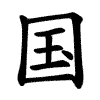Definify.com
Definition 2026
着
着
| ||||||
|---|---|---|---|---|---|---|
Translingual
| Stroke order | |||
|---|---|---|---|

| |||
| Japanese stroke order | |||
|---|---|---|---|

| |||
| Shinjitai | 着 |
|---|---|
| Simplified | 着 |
| Traditional | 着/著 |
Han character
着 (radical 123 羊+5, 11 strokes, cangjie input 廿手月山 (TQBU), composition ⿱⺶目)
References
- KangXi: not present, would follow page 808, character 5
- Dai Kanwa Jiten: character 23339
- Hanyu Da Zidian: volume 5, page 3129, character 9
- Unihan data for U+7740
Chinese
| For pronunciation and definitions of 着 – see 著. (This character, 着, is the simplified and variant traditional form of 著.) |
Notes:
|
Usage notes
着 is both the simplified and variant traditional character of some senses of 著 (Pronunciations 1 and 2). Its usage varies with region:
| Region | 著 | 着 |
|---|---|---|
| Taiwan | standard | rare variant |
| Hong Kong | variant | standard |
Japanese
Kanji
着
Readings
Compounds
Compounds
Derived terms
| Kanji in this term |
|---|
| 着 |
|
ちゃく Grade: 3 |
| on'yomi |
Pronunciation
Counter
着 (hiragana ちゃく, romaji -chaku)
- suits of clothing
Noun
着 (hiragana ちゃく, romaji chaku)
- arrival at
Suffix
References
- ↑ 2006, 大辞林 (Daijirin), Third Edition (in Japanese), Tōkyō: Sanseidō, ISBN 4-385-13905-9
- ↑ 1998, NHK日本語発音アクセント辞典 (NHK Japanese Pronunciation Accent Dictionary) (in Japanese), Tōkyō: NHK, ISBN 978-4-14-011112-3
Korean
Hanja
着 • (chak) (hangeul 착, revised chak, McCune-Reischauer ch'ak, Yale chak)
- This term needs a translation to English. Please help out and add a translation, then remove the text
{{rfdef}}.